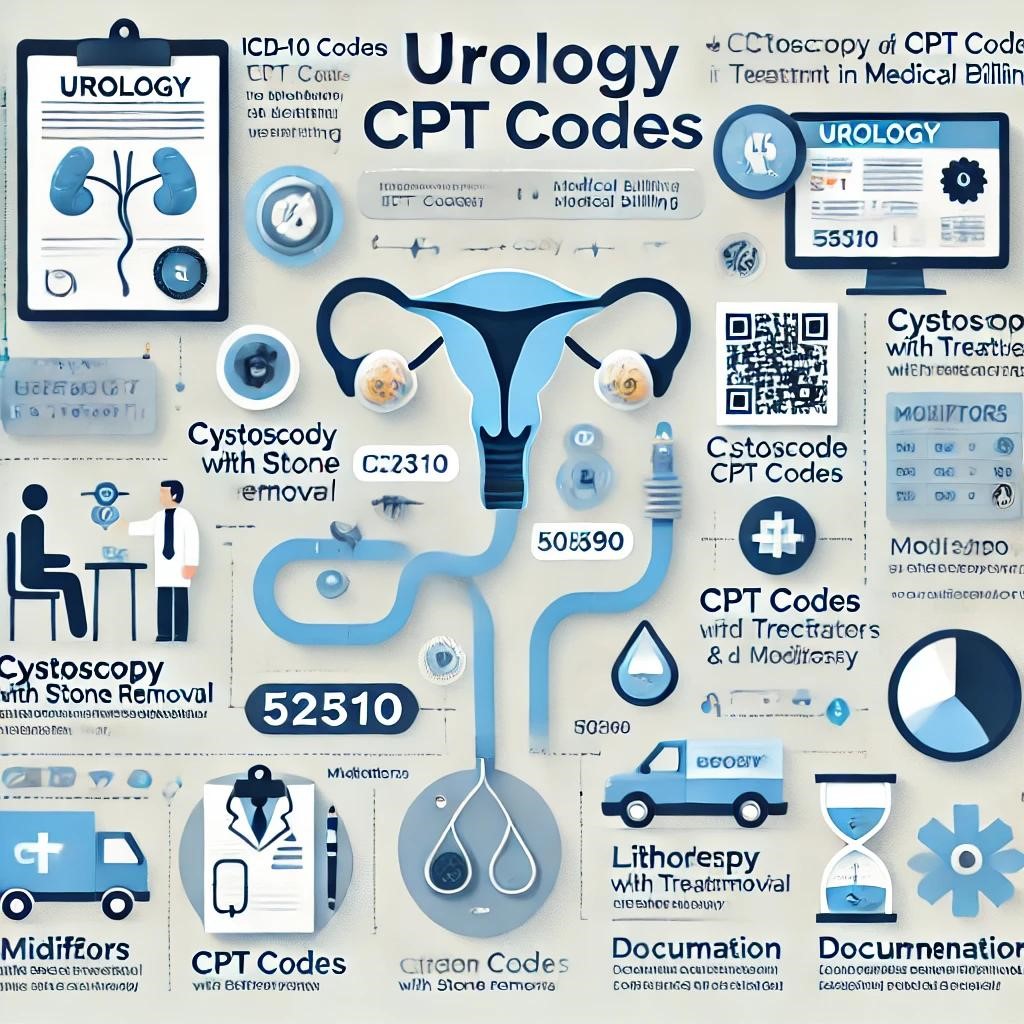A Detailed Guide to Urology CPT Codes with Examples and Usage
Urology CPT (Current Procedural Terminology) codes are essential for medical billing in urology practices. These codes represent specific medical, surgical, and diagnostic services provided to patients. Proper understanding and usage of these codes ensure accurate billing and timely reimbursement.

1. What Are CPT Codes?
CPT codes are a set of standardized codes maintained by the American Medical Association (AMA) to describe medical procedures and services. Each CPT code is a five-digit number representing a particular service or procedure.
2. Common Urology CPT Code Categories
Office Visits and Consultations
- 99203: New patient office visit, moderate complexity.
- 99213: Established patient office visit, low complexity.
Procedures and Surgeries
- 52000: Cystourethroscopy (cystoscopy) without further procedures.
- 52310: Cystourethroscopy with removal of a ureteral stone.
Diagnostic Testing
- 51728: Urodynamics study with electromyography.
- 76870: Ultrasound of the scrotum and contents.
Treatment Procedures
- 50590: Lithotripsy (shock wave treatment) for kidney stones.
- 53850: Prostate laser vaporization for benign prostatic hyperplasia.
Injections and Catheterizations
- 51702: Insertion of a temporary catheter.
- 51798: Measurement of bladder capacity.
3. Example Scenario
Procedure: Removal of a Kidney Stone Using Cystoscopy
Case: A patient presents with a ureteral stone causing severe pain.
Procedure Performed: The urologist performs a cystoscopy and removes the stone using a basket.
CPT Code Used: 52310
Documentation: Detailed records must include the diagnosis (e.g., ureteral calculus), symptoms (pain), and procedure details (cystoscopy with removal).
4. How to Use Urology CPT Codes
- Accurate Diagnosis Coding: Pair the CPT code with the correct ICD-10 diagnosis code to justify the procedure. For example, for a ureteral stone, use ICD-10 code N20.1.
- Modifiers: Add modifiers if required. For instance, use modifier -59 to indicate a distinct procedural service.
- Documentation: Ensure complete and accurate medical records to support the services billed.
- Stay Updated: Urology codes are subject to annual updates by the AMA. Always refer to the latest CPT manual.
5. Tips for Avoiding Common Errors
- Double-check coding guidelines to ensure compliance with payer policies.
- Audit regularly to identify and rectify errors in billing.
- Use electronic health records (EHR) systems with integrated coding tools for accuracy.
Conclusion
Understanding and utilizing urology CPT codes effectively is essential for accurate medical billing and successful reimbursement. By adhering to coding guidelines, pairing CPT codes with the correct diagnosis codes, and maintaining meticulous documentation, healthcare providers can streamline their billing process and minimize errors. Staying informed about annual updates to these codes ensures compliance with industry standards. Whether performing routine procedures or specialized treatments, a robust knowledge of CPT codes is invaluable in delivering efficient and ethical care while maintaining financial stability in urology practices.




